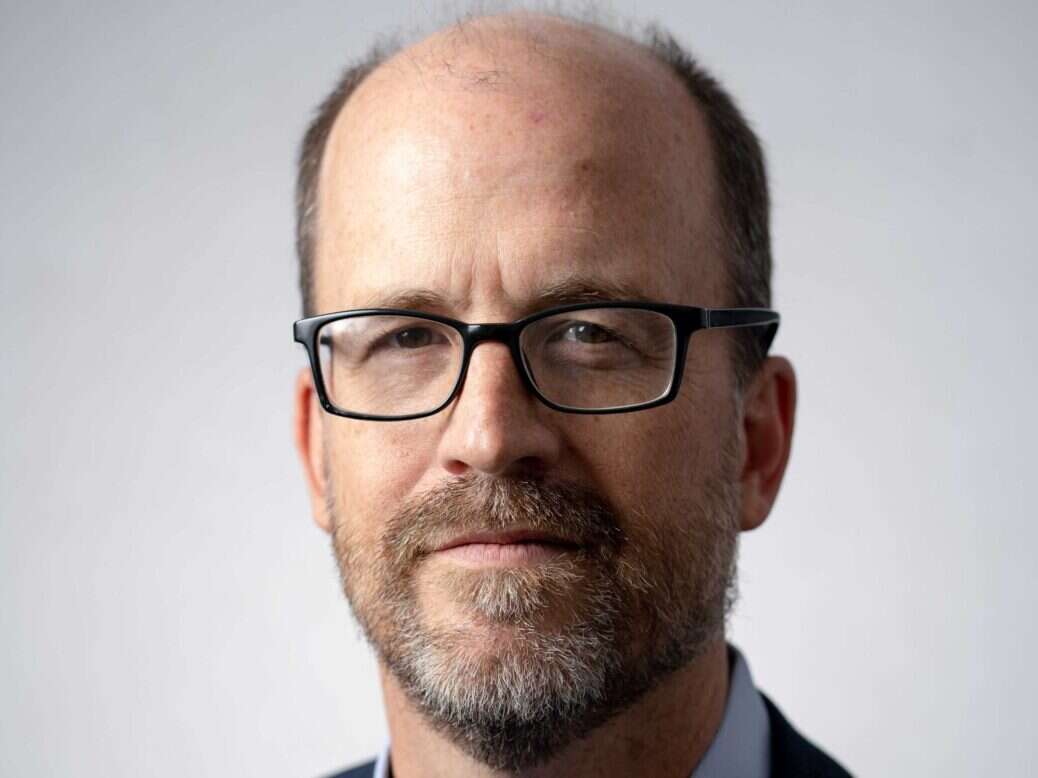
The New York Times’ London newsroom is exactly where you’d expect an American tourist to end up: on a smoggy street near Tottenham Court Road and within spitting distance of a greasy spoon, an independent bookstore, a tatty tourist shop, a bureau de change and (surely?) Britain’s only retail outlet that specialises in the sale of umbrellas.
Several members of London’s commentariat – Andrew Neil, Iain Martin, Piers Morgan, Sam Ashworth-Hayes, Douglas Murray and Sean Thomas among them – have accused the “Gray Lady” of regularly depicting their country in cliched, often offensive terms. Broadly, they argue that the Times portrays the UK as an antiquated, sometimes racist land where inhabitants cavort in swamps and chow down on boiled mutton.
So, I asked Jim Yardley, the newspaper’s outgoing Europe editor and a London local since 2016, does The New York Times hate Britain? “I love Britain,” he responded. “I disagree strongly with the notion that we have any dislike of Britain.”
I asked Yardley about the (now-corrected) news article from 2020 that reported to the world how Britons, during a heat wave in the early months of the pandemic, had “cavorted” in “swamps”. “I mean, hey, it was a mistake and it was corrected,” he said. “If we make an error – a small error – we correct it. But really, we’re very committed to this story and to Britain.”
I asked him if he’d ever sampled boiled mutton during his time in the UK (in 2018, the NYT ran an article headlined: “Beyond Porridge and Boiled Mutton: A Taste of London”). “That was a travel story – that came out of New York,” said Yardley. But, I persisted, had he ever eaten boiled mutton? “Uh, I’m trying to think. I don’t think so.”
‘What hours do I not work!?’
I interviewed Yardley, 58, a father of three who grew up in North Carolina, in a meeting room in the NYT’s single-floor London newsroom.
The Times has around 150 employees in London, more than half of whom work in editorial. The newsroom headcount has more than doubled since Yardley started in November 2016 and now includes an international investigations unit, audio producers and live news teams. Ordinarily, staff come into the office on Wednesdays and Thursdays. But, on the Wednesday I visited, the newsroom was quiet thanks to railway worker strikes.
Yardley, who wore a blue shirt, a dark V-neck, chinos and brown shoes, is due to be replaced by Adrienne Carter, currently the NYT’s Asia editor, later this year when he moves to become associate managing editor of enterprise (i.e. off-diary journalism) at the newspaper.
When he moves back, it will be Yardley’s first time living in New York since 1999, when he worked as a Brooklyn reporter for the newspaper. Yardley worked from NYT bureaux in Texas, China, India and Italy before starting in his current post.
The Times has 32 international bureaux, with more than 200 journalists based outside the United States. London, like Seoul in South Korea, is a “full-fledged newsroom,” in Yardley’s words. This means that as well as having bureau correspondents, the UK capital also has a team that operates the NYT’s main homepage for “several hours a day”. (The international print edition of the newspaper features the work of European journalists but is curated and edited by teams in the US and Hong Kong.)
In his role, Yardley has regularly coordinated with fellow staff in the United States, as well as correspondents across the rest of the world. “The upside of the London timezone is you are basically in the middle of the world,” he said. “So our editors here can have conversations with our reporters in Europe, Africa and the Middle East. We also pick up stuff from Asia.” When I asked Yardley what hours he generally worked, he responded: “What hours do I not work!? That’s a good question. I do work a lot.”
‘Enterprise’ reporting from Ukraine

The last year of Yardley’s tenure as Europe editor has been dominated by the war in Ukraine. Since February 2022, the Times has had more than 100 journalists, photographers and support staff on rotation in Ukraine – at least 15 staff have been in the country at all times. The Ukraine bureau is led by Andrew Kramer. The New York Times is one of few outlets to have reported from Chernobyl, Bakhmut, Mykolaiv and Sievierodonetsk.
Yardley has been responsible for coordinating much of the title’s coverage from Ukraine. He told me that when the war broke out, he regularly worked from 4.30am until midnight. “We’re trying to walk that fine line where we protect [staff] as best we can in probably the riskiest journalistic situation imaginable, and yet still get the story,” he said.
Yardley visited his team in Ukraine last month. “As a journalist, you want to understand what your folks are going through and how best you can support them,” he said. “And selfishly you want to see what the story feels like.”
As well as covering the day-to-day news from Ukraine, The New York Times has invested time and resources into finding original, enterprise stories from the war-torn country and the surrounding region. Yardley referenced, for example, a visual investigations team project that identified the Russian military unit and commander that killed dozens of people in Bucha.
“It’s a tremendous marathon to write about this day-in, day-out and to do original enterprise,” he said. “We do the news – we have to do the news, the news is competitive and there are lots of people out there doing great stuff, so we’re right there with them. But we also, while we’re doing the news, expect to deliver original journalism.”
‘We want to be competitive with the strongest players in every market’
Before the war, Yardley helped edit a team that won a 2020 Pulitzer Prize for an investigation into Russian intelligence operations around the world. The project, led by Michael Schwirtz, included an interview with a Russian assassin who revealed the inner workings of Moscow’s intelligence operation.
The kind of original, or “enterprise”, journalism that Yardley advocates form a large part of The New York Times’ plans for global growth. And it has been in evidence in the UK, as well as Ukraine and Russia.
The New York Times has invested serious time and energy into investigating the UK’s legal system – culminating in reports documenting how black men are being “disproportionately targeted” by police. Investigative reporter Jane Bradley revealed allegations that a major Conservative Party donor was “suspected of secretly funnelling hundreds of thousands of dollars into the party from a Russian account”. And the Times last month sent two reporters to Wrexham to witness first-hand how severe ambulance delays are harming the area.
Yardley said The New York Times aims to dig this deep in every country where it has reporters. “We want to be competitive with the strongest players in every market,” he added. “Our Berlin bureau chief will feel competitive with Der Spiegel. Our Paris bureau chief will feel competitive with Le Monde.”
And in the UK? Yardley declined to be drawn on what he made of the British media as a whole, though he did name The Guardian and the BBC among the Times’ biggest competitors on the global scale.
How big is The New York Times in Britain? Yardley and the Times were not specific. In December Nytimes.com ranked as the 26th largest news website in the UK, according to a Press Gazette ranking. Ipsos iris estimated that its audience was 7.6 million, making it smaller than some regional news sites, including the Manchester Evening News, Birmingham Live, Scotland’s Daily Record and Wales Online.
The NYT’s traffic figure had grown significantly from 3.5 million in January 2022 but was down from a peak of 12.2 million in March last year (The New York Times Company acquired Wordle at the end of January).
While website traffic is important, the NYT's main business focus is on attracting digital subscribers. Here it becomes more difficult to work out exactly how well it is performing. The New York Times reports having more than one million non-US subscribers and names the UK as one of its three largest international markets (overall, it has subscribers in 235 countries and territories, it said).
Therefore, The New York Times likely has fewer paying readers in the UK than national newspapers such as The Telegraph (which has 587,000 digital subscribers), the Financial Times (which said last year that around half of its one million digital subs were in the UK), News Corp’s Times, Sunday Times and Times Literary Supplement (468,000) and The Guardian, which hit one million paying digital readers in December 2021.
But, with an ever-growing newsroom and a commitment to building its British audience, The New York Times should be considered serious competition for the UK's native newsgroups. One of the NYT's British critics, Iain Martin, even suggested that its negative UK content could pay dividends. "The niche, paying market the NYT wants in Britain is Britons who can’t stand Britain," he wrote for Reaction. "There is quite a bit of revenue to be made here."
Yardley had a different take. “Readership has grown substantially here,” he said. “When we did the project on the criminal justice system, or when Jane broke the big story about the Tory party head who got some money that came from Russian accounts, you know, we get notes from people saying: ‘Why do I have to read this in The New York Times?’ I like that. That’s what we should be doing. We’re willing to tackle topics no matter what. We’re extremely proud of our coverage.”
Quickfire questions with Jim Yardley
Favourite film? “Indiana Jones – the first one.”
Favourite book? “Favourite book is tough – I’m the son of a book critic.”
Last books read? Putin: His Life and Times by Philip Short, The Gardener from Ochakov by Andrey Kurkov, and Grey Bees by Andrey Kurkov
Favourite British tourist attraction? “I won’t say this is my favourite, but I was recently in the Isle of Arran and thought it was amazing.”
European holiday destination? “Rome’s not bad.”
British food? “Oh, I actually really like fish and chips. That’s kind of a cliché, but I actually do.”
Note: This article was updated on 2 February to delete reference to revenue figures for The New York Times' UK-based subsidiary, which the NYT said cannot be used to infer European subscription turnover, and to make clear that Michael Schwirtz led the 2020 Pulitzer Prize team referenced above.
Email pged@pressgazette.co.uk to point out mistakes, provide story tips or send in a letter for publication on our "Letters Page" blog
